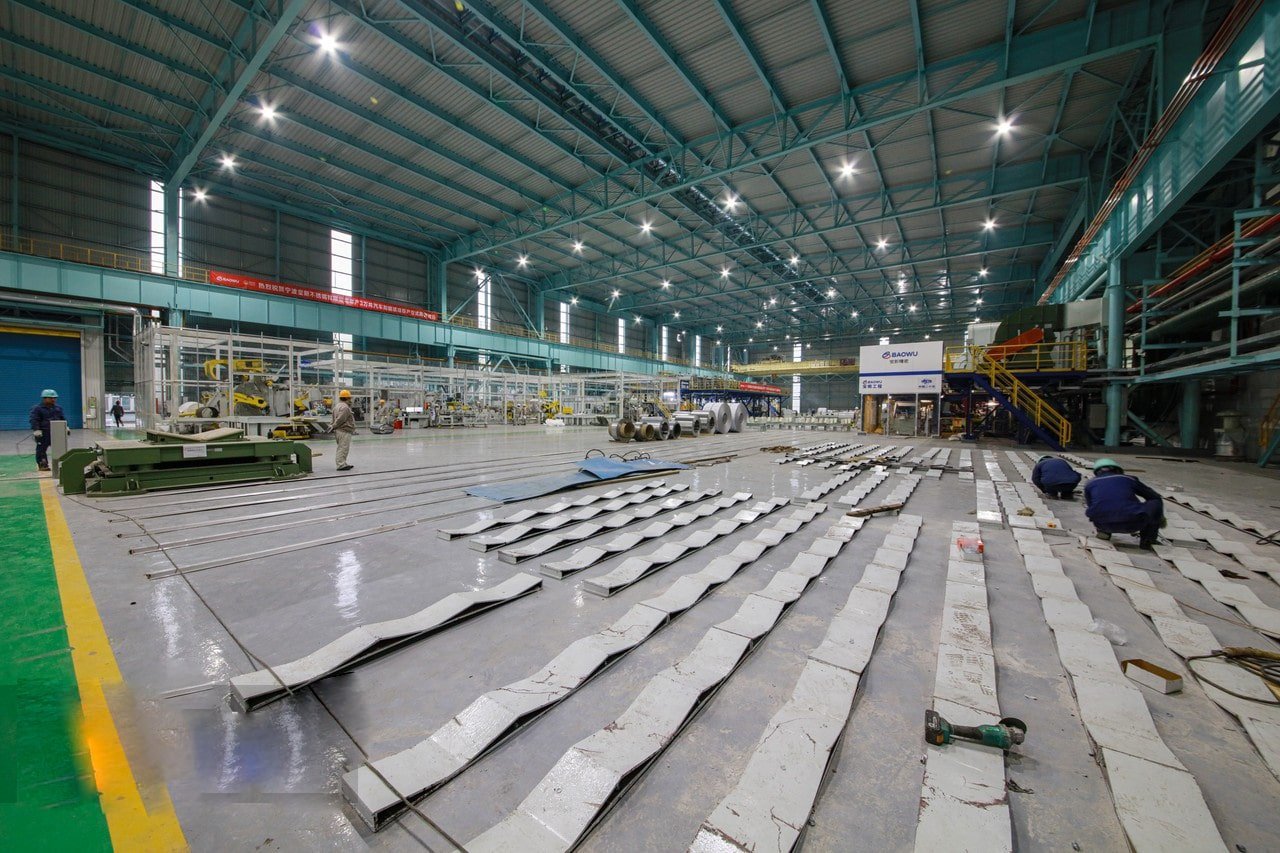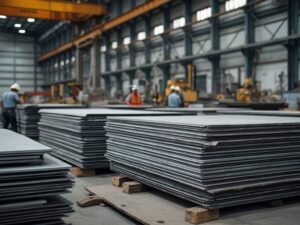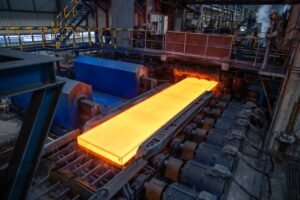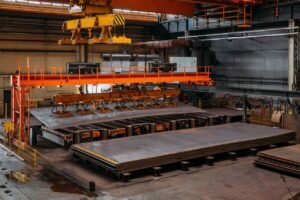What Factors Affect the Price of Stainless Steel Sheets?

As a stainless steel manufacturer, I've witnessed dramatic price fluctuations that significantly impact both suppliers and buyers. Understanding these pricing factors is crucial for making informed purchasing decisions.
Stainless steel sheet prices are primarily influenced by raw material costs1, particularly nickel and chromium prices, along with market demand, production capacity, and global economic conditions. These factors can cause price variations of 15-30% within a single year.
Having managed pricing strategies for over a decade, I've learned that successful procurement requires understanding multiple factors affecting stainless steel prices. Let me share insights that will help you navigate these complex market dynamics.
The interplay of various factors affecting stainless steel sheet pricing creates a complex market environment that requires careful monitoring and analysis for effective cost management.
How Do Raw Material Costs Influence Sheet Pricing?
Through years of procurement experience, I've observed that raw material costs typically account for 60-70% of the final sheet price.
Raw material costs, especially nickel and chromium prices2, directly impact stainless steel sheet pricing. These materials can represent up to 70% of production costs, making their price fluctuations crucial to final product pricing.

Primary Raw Material Impact
The relationship between raw material prices and final sheet costs represents one of the most significant factors in pricing dynamics. Our cost analysis data shows that nickel price fluctuations3 alone can cause stainless steel sheet prices to vary by up to 25% within a single quarter.
Recent market data reveals that nickel prices have experienced volatility ranging from $12,000 to $20,000 per metric ton. This volatility directly affects production costs, with each $1,000 change in nickel prices typically resulting in a 3-4% adjustment in final sheet prices for nickel-bearing grades like 304 and 316.
Chromium, another essential element, has shown more stability but still significantly impacts pricing. Our procurement records indicate that chromium price variations4 can affect final sheet costs by 5-10%, though these changes tend to occur more gradually than nickel price fluctuations.
Raw Material Cost Impact:
| Material | Price Range/MT | Impact on Sheet Cost |
|---|---|---|
| Nickel | $12,000-20,000 | 25-30% |
| Chromium | $2,000-3,500 | 5-10% |
| Molybdenum | $15,000-25,000 | 3-8% |
Processing Cost Variations
The conversion of raw materials into finished sheets involves multiple processing steps, each contributing to the final cost. Our production data indicates that processing costs typically represent 20-30% of the total sheet price.
Energy costs play a particularly significant role in processing expenses. Recent analysis shows that energy typically accounts for 15-20% of total processing costs. Fluctuations in energy prices can therefore significantly impact final sheet pricing, especially for grades requiring multiple processing steps.
Labor costs, while generally more stable, also influence processing expenses. Our manufacturing data shows that labor typically represents 10-15% of processing costs, with regional variations affecting final pricing structures.
Market Response Mechanisms
The stainless steel industry has developed various mechanisms to manage raw material price volatility. Our pricing strategies include:
- Alloy surcharges5 to reflect raw material cost changes
- Base price adjustments for long-term trends
- Contract pricing mechanisms for stability
- Inventory management strategies
- Risk hedging approaches
What Role Do Supply and Demand Play in the Market?
Drawing from my experience in market analysis, supply and demand dynamics create significant price fluctuations in the stainless steel market.
Supply and demand factors can cause price variations of 10-20% within months. Market conditions, including production capacity utilization, inventory levels, and regional demand patterns, directly influence pricing strategies.

Global Production Capacity
The global stainless steel production landscape has undergone significant changes in recent years. Our market analysis shows that worldwide production capacity utilization rates directly impact pricing trends.
Current industry data indicates that global capacity utilization6 averages 75-80%, though this varies significantly by region. When utilization rates exceed 85%, we typically observe price increases of 5-15% due to supply constraints. Conversely, utilization rates below 70% often lead to price competition and downward pressure on margins.
Recent production statistics reveal interesting patterns:
| Region | Capacity Utilization | Price Impact |
|---|---|---|
| Asia | 82-85% | +8-12% |
| Europe | 70-75% | -5-8% |
| Americas | 75-78% | Stable |
Inventory Management Impact
Inventory levels throughout the supply chain significantly influence market pricing. Our distribution network data shows that inventory positions7 can affect local prices by 5-10% within weeks.
We've observed that:
- High inventory levels (>3 months supply) typically lead to price softening
- Low inventory levels (<1 month supply) often trigger rapid price increases
- Optimal inventory levels (1.5-2 months supply) generally maintain price stability
Regional Demand Variations
Different regions exhibit distinct demand patterns that affect pricing. Through our global sales network, we've documented how regional factors influence local pricing:
-
Infrastructure Development
- Emerging markets show 15-20% higher demand growth
- Developed markets maintain stable replacement demand
- Project-based demand can cause local price spikes
-
Industry Concentration
- Manufacturing hubs experience more stable pricing
- Remote locations face higher logistics costs
- Seasonal factors affect regional demand patterns
How Do Thickness and Surface Finish Affect Cost?
Based on our manufacturing experience, product specifications significantly impact production costs and final pricing.
Thickness and surface finish specifications can affect prices by 20-40%. Thinner gauges typically cost more per ton due to additional processing requirements, while premium surface finishes can add 15-25% to base prices.

Thickness-Related Cost Factors
The relationship between sheet thickness and production costs is inverse and non-linear. Our production data reveals that manufacturing costs increase significantly as thickness decreases, particularly below 1mm.
Processing thinner gauges requires:
- More frequent roll adjustments
- Additional annealing cycles
- Higher precision control
- Increased inspection points
- Greater yield losses
Cost Premium by Thickness:
| Thickness Range | Processing Premium | Yield Impact |
|---|---|---|
| 2.0mm | Base | Base |
Surface Finish Impact
Surface finish requirements significantly influence production costs and final pricing. Our finishing department data shows that premium finishes can increase processing time by up to 300% compared to standard finishes.
Different finish types affect costs as follows:
- 2B (Standard) - Base price
- BA (Bright Annealed)8 - +15-20%
- No.4 (Brushed) - +20-25%
- Mirror Finish - +35-45%
The cost impact varies based on:
- Processing time requirements
- Equipment wear rates
- Yield losses
- Quality control needs
- Material handling requirements
Quality Grade Considerations
Quality grade specifications directly impact production costs through:
- Raw material selection
- Processing controls
- Testing requirements
- Documentation needs
- Rejection rates
Are There Seasonal Fluctuations in Stainless Steel Sheet Prices?
Drawing from my years monitoring market trends, seasonal patterns significantly influence stainless steel pricing, though these cycles have become less predictable in recent years.
Seasonal price fluctuations typically range from 5-15%, with peak demand during construction seasons and slower periods during winter months. However, global market integration has somewhat smoothed these traditional patterns.

Construction Season Impact
The construction industry's seasonal nature traditionally creates predictable demand patterns that influence stainless steel prices. Our sales data over the past decade shows clear correlations between construction activity and price movements.
Spring and early summer typically see the strongest demand, driving prices up by 8-12% from winter lows. This pattern reflects increased construction activity in temperate regions, particularly in North America and Europe. However, recent years have shown some modification to these patterns due to climate change and extended construction seasons.
The impact of construction seasonality varies significantly by region. In tropical and subtropical areas, construction activities maintain a more consistent pace throughout the year, leading to more stable local demand patterns. Our analysis of regional sales data indicates that markets with strong seasonal construction patterns can experience price variations up to 15% between peak and low seasons.
Traditional Seasonal Price Variations:
| Season | Price Trend | Demand Factors |
|---|---|---|
| Spring | +8-12% | Construction start |
| Summer | +5-8% | Peak activity |
| Fall | -3-5% | Project completion |
| Winter | -5-10% | Reduced activity |
Manufacturing Cycle Effects
Industrial manufacturing cycles create another layer of seasonal influence on stainless steel pricing. Our customer demand analysis reveals distinct patterns in different manufacturing sectors.
The automotive industry, for example, typically reduces production during model changeover periods, usually in late summer. This temporary reduction in demand can lead to localized price softening of 3-5%. However, the growing trend toward continuous production schedules has begun to minimize these traditional cyclical effects.
Food processing equipment manufacturers, another major consumer of stainless steel sheets, often increase purchases in advance of peak food processing seasons. This creates predictable demand spikes that can influence regional pricing by 5-7% during key ordering periods.
Inventory Adjustment Patterns
End-of-year inventory management practices significantly impact market prices. Many companies adjust their stock levels for tax and budgetary purposes, creating predictable market movements.
December typically sees reduced purchasing activity as companies minimize year-end inventory positions. This pattern often results in price weakening of 5-8% during the final quarter. Conversely, early first quarter often experiences increased activity as companies rebuild inventories, leading to price strengthening of similar magnitude.
Our distribution network data shows that these inventory adjustment patterns have become more pronounced in recent years, with price swings of 10-15% between December lows and February highs becoming increasingly common.
Key Seasonal Factors:
- Construction activity cycles
- Manufacturing schedules
- Inventory management practices
- Regional weather patterns
- Fiscal year timing
Which External Economic Factors Contribute to Price Changes?
Through my experience managing international steel trade, I've observed how global economic factors can dramatically impact stainless steel pricing.
External economic factors such as currency exchange rates, energy costs, and trade policies can cause price variations of 20-30%. These factors often create more significant price movements than traditional supply-demand dynamics.

Global Economic Conditions
The interconnected nature of modern economies means that global economic health significantly influences stainless steel pricing. Our market analysis over the past decade reveals strong correlations between economic indicators and price movements.
GDP growth in major economies directly impacts stainless steel demand and pricing. During periods of strong global growth (>3% GDP), we typically observe price increases of 15-20% due to increased industrial activity. Conversely, economic slowdowns can trigger price decreases of similar magnitude as demand contracts.
Recent global events have demonstrated how economic uncertainty can create rapid price fluctuations. The COVID-19 pandemic, for example, caused price swings of up to 25% within months as markets adjusted to sudden changes in demand patterns and supply chain disruptions.
Economic Impact Metrics:
| Factor | Typical Impact | Response Time |
|---|---|---|
| GDP Growth | ±15-20% | 3-6 months |
| Interest Rates | ±5-10% | 1-3 months |
| Currency Rates | ±10-15% | Immediate |
Energy Market Dynamics
Energy costs represent a significant component of stainless steel production expenses, and their fluctuations directly impact pricing. Our production cost analysis shows that energy typically accounts for 20-25% of total manufacturing costs.
Recent volatility in global energy markets has created unprecedented challenges for price stability. Natural gas price spikes have led to production cost increases of up to 30% in some regions, forcing manufacturers to adjust pricing strategies accordingly. These energy cost fluctuations often result in rapid price adjustments, particularly in energy-intensive finishing processes.
The transition toward renewable energy sources is beginning to influence long-term pricing trends. While initial investment in green energy technology may increase costs, our analysis suggests that renewable energy adoption could lead to more stable pricing in the future as dependency on volatile fossil fuel markets decreases.
Trade Policy Impact
International trade policies and regulations significantly influence regional price variations. Our experience navigating global markets has shown that trade actions can create price differentials of 15-25% between markets.
Tariffs and trade restrictions have particularly strong effects on regional pricing:
- Direct cost impact through duties
- Market access limitations
- Supply chain restructuring
- Quota systems effects
- Compliance cost increases
The implementation of new trade policies often leads to immediate price reactions followed by longer-term market adjustments. Recent trade disputes have demonstrated that markets can take 6-12 months to fully adjust to new trade policy frameworks, during which time significant price volatility is common.
Conclusion
Stainless steel sheet pricing is influenced by a complex interplay of factors ranging from raw material costs to global economic conditions. Understanding these factors helps buyers and sellers make informed decisions and develop effective pricing strategies in this dynamic market environment.
-
Learn about the influence of raw material costs on pricing. ↩
-
Stay updated on critical raw material prices affecting costs. ↩
-
Understand the effect of nickel prices on sheet costs. ↩
-
Compare chromium's stability to nickel in pricing impact. ↩
-
Discover how alloy surcharges adjust for raw material costs. ↩
-
Explore the impact of production capacity on pricing trends. ↩
-
Understand inventory's role in price fluctuations. ↩
-
Learn about the price implications of surface finishes. ↩
Have Questions or Need More Information?
Get in touch with us for personalized assistance and expert advice.







![304 Stainless Sheet Price per Ton 2025 [Predictive Insights & Key Factors]](https://mfysteel.com/wp-content/uploads/2025/06/18t07-300x200.png)
